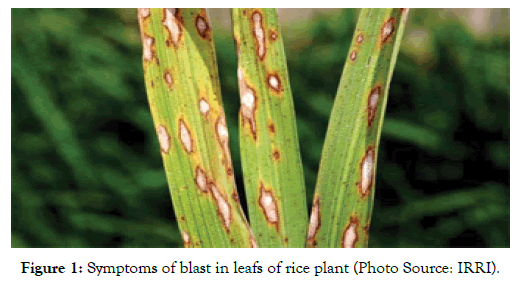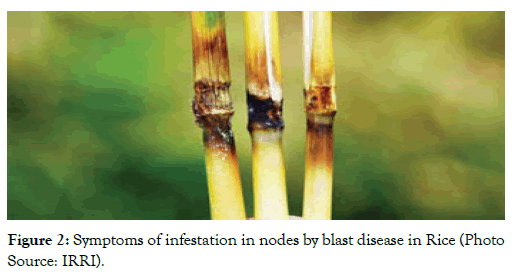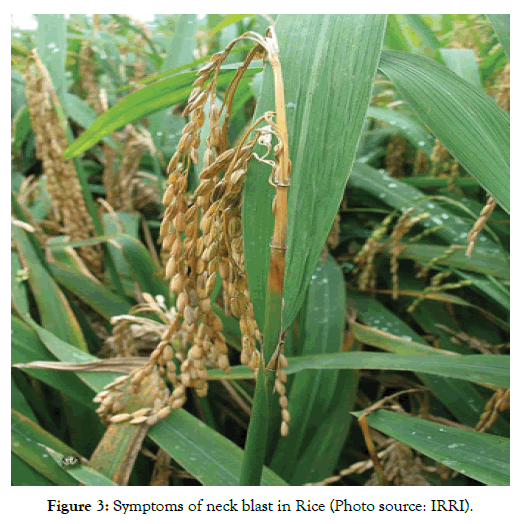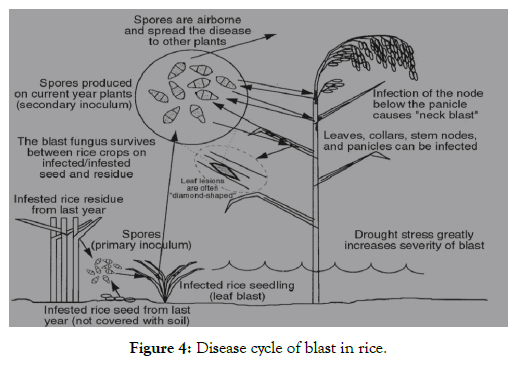Indexed In
- Open J Gate
- Genamics JournalSeek
- Academic Keys
- JournalTOCs
- CiteFactor
- Ulrich's Periodicals Directory
- Access to Global Online Research in Agriculture (AGORA)
- Electronic Journals Library
- Centre for Agriculture and Biosciences International (CABI)
- RefSeek
- Directory of Research Journal Indexing (DRJI)
- Hamdard University
- EBSCO A-Z
- OCLC- WorldCat
- Scholarsteer
- SWB online catalog
- Virtual Library of Biology (vifabio)
- Publons
- Geneva Foundation for Medical Education and Research
- Euro Pub
- Google Scholar
Useful Links
Share This Page
Journal Flyer

Open Access Journals
- Agri and Aquaculture
- Biochemistry
- Bioinformatics & Systems Biology
- Business & Management
- Chemistry
- Clinical Sciences
- Engineering
- Food & Nutrition
- General Science
- Genetics & Molecular Biology
- Immunology & Microbiology
- Medical Sciences
- Neuroscience & Psychology
- Nursing & Health Care
- Pharmaceutical Sciences
Review Article - (2020) Volume 11, Issue 12
A Review of Blast Disease of Rice in Nepal
Nabina Neupane and Kiran Bhusal*Received: 02-Nov-2020 Published: 14-Dec-2020, DOI: 10.35248/2157-7471.20.12.228
Abstract
Blast disease is caused by Magnaporthe grisea (syn. Pyricularia oryzae) firstly reported in 1637 from China. In Nepal it was firstly reported from Thimi, Bhaktapur in 1964. Symptoms of this disease appear in all stages from seedling in nursery to heading in main field, however, the most devastating stages are seedling stage, tillering stage and panicle initiation stage. Typical symptoms of blast appear on leaves, node, neck, collar, panicles, rachis and even the glumes are also affected. Globally, blast of rice is responsible for 10-30% of yield losses every year. In susceptible varieties the disease causes 10-20% yield reduction but in severe condition it went upto 80% in Nepal. Cloudy weather, high relative humidity (93-99%), low night temperature between 15-20°C, longer duration of dew are the most favorable condition for the outbreak of blast fungus. The most usual approaches for the management of rice blast disease are management in fertilizers and irrigations, plantation of resistant varieties and application of fungicides. Higher dose of nitrogen increase susceptibility so, it should be applied in split doses. Use of resistant cultivars such as Khumal-1, Khumal-2, Khumal-3, Radha-12, Chandannath-1, Chandannath-3, Sabitri and Palung-2 for the management of rice blast is sustainable and ecofriendly approach. Seed treatment with Trichoderma viridae at 4 g/kg or Pseudomonas fluorescens at 10 g/kg help to inhibit growth of blast fungus. Use of chemical named Kasugamycin used to control blast fungus is most commonly used and popular among Nepalese farmers.
Keywords
Blast disease; Fungus; Management; Panicle; Treatment; Yield
Introduction
Rice is the most important staple food cultivated in 113 countries and principle source of income for about 100 million households in Asia and Africa [1]. Rice ranks the first among cereal crops in terms of area, production and livelihood of people in Nepal as 1,552,469 ha of cultivable land is being used for rice cultivation and 5,230,327 metric ton of rice is being harvested from these lands [2]. The average yield of rice per hectares is 3,369kg [3]. As the most important stable food of Nepalese people, rice supplies about 40% of the food calorie intake and contributes nearly 20% to the agricultural gross domestic product (AGDP) and almost 7% to GDP [4]. Diseases are considered one of the most important factors for the reduction in production of rice in world. Among them blast is one of the important fungal disease of rice because of its wide distribution and destructiveness under favorable condition. This disease is caused by fungus Magnaporthe grisea (syn. Pyricularia oryzae). Blast disease is also known as rice rotten neck [5] and rice seedling blight [6]. Different types of blast occur in different stages i.e. leaf blast during vegetative growth, node and neck blast occurs during reproductive stage having similar symptoms [7]. The yield potential of non-glutinous cultivars eg Khumal-4 and Manjushree-2 is substantially greater than that of the glutinous cultivars e.g. Thaichung-176 [8,9]. Every year blast of rice is responsible for 10-30% of yield losses worldwide [10]. The disease infects wide variety of grasses including rice, wheat and barley, and is particularly more destructive to upland rice crops produced without irrigation, land with frequent and prolonged periods of rain, higher dose of nitrogen in soil, humid region and cool temperature in the daytime [11].
Literature Review
This review contains all information about blast diseases along with its management.
Occurrence
The disease was first reported in 1637 from China and was known as rice fever disease [12]. Now it is one of the most important diseases occurring in more than 85 rice growing countries causing considerable economic loss [12]. Blast disease of rice was first recorded in Nepal in 1964 from Thimi, Bhaktapur [13]. Although blast was prevalent throughout the rice growing areas in the country, it causes more devastation in valleys, river-basin, foot-hills and hills of Nepal [14]. Blast occurs in all rice growing areas from lowland (60 m.a.s.l.) to high hills (3050 m.a.s.l.) [10,15]. Symptoms of this disease appear in all stages from seedling in nursery to heading in main field, however, the most devastating stages are seedling stage, tillering stage and panicle initiation stage. 'Jumli Marshi' cultivated in Jumla district is also susceptible to blast [13]. An experiment was conducted at Regional Agricultural Research Station (RARS), Banke, Nepal to screen rice genotype against leaf blast disease where 101 rice genotypes were checked among which 28 genotypes were found resistant, 15 genotypes were moderately resistant, 16 genotypes moderately susceptible, 39 genotypes were susceptible and 3 genotypes were highly susceptible to leaf blast [16]. Neck blast is the more serious phase of the blast disease as it causes direct yield losses, since filling of the grains on infected panicles is poor [17].
Economic importance
Every year blast of rice is responsible for 10-30% of yield losses worldwide [10]. Under favorable condition it can devastate whole rice field within 15 to 20 days and causes upto 100% yield loss [18]. More than 50% yield losses occur every year in Philippines and approximately 865,000 hectares of rice fields in Japan are being affected by this disease every year [14]. On average, a total of US$203.49 million is lost annually with addition of both mitigation cost and yield loss [19]. In 1950, blast causes grain reduction of 50% in susceptible varieties in India [17]. In susceptible varieties the disease causes 10-20% yield reduction but in severe condition it went upto 80% in Nepal [14]. With 1% increase in neck blast, the yield losses in 'Masuli' and 'Radha-17' cultivars was 38.5 and 76.0 kg/ha respectively [20]. Neck blast infects the Hardinath-1 variety of rice in Chitwan, Nepal where it was planted in about 5,000 hectares resulting 100% yield reduction [21]. Each unit increase in leaf blast and neck blast rating resulted in 5.97 and 0.23 gram/ plant yield reduction [22]. Yield reduction due to neck blast and leaf blast are 70% and 50-70% respectively [23].
Symptoms
Typical symptoms of blast appear on leaves, node, neck, collar, panicles, rachis and even the glumes are also affected. The symptoms differ depending upon the part of the plant affected which include leaf blast, node blast, neck/ panicle blast, collar rot.
a) Leaf Blast
The lesions or spots first appear on leaves as minute water soaked brown specks, then rapidly enlarge, become elliptical, elongated diamond shaped or eye shaped pointed at both ends with white or greyish centre, reddish brown margin, sometimes with a yellow halo [24]. Later the spots collapse together and give blightening appearance. On resistant cultivars, spots appear but are small in size and lack spores [25]. Lesion reduce the net photosynthetic rate and impaired the transport of water or nutrients or both and consequently affect the leaf tissues situated near the lesions [26]. While research on RARS, Banke, round, slightly prolonged nectrotic gray spots, of 1-2 mm in diameter with a well-defined brownish margin, little sporulating lesions mostly on the lower leaves were found on moderately resistance cultivars whereas typical blast lesions of 3 mm or longer infecting 51-75% of the leaf area were found on highly susceptibal cultivars [16] (Figure 1).

Figure 1: Symptoms of blast in leafs of rice plant (Photo Source: IRRI).
b) Node Blast
In case of the node blast, node portion of the culms turn brown or black and the portion above the infected node may die [27] and breakdown as the xylem and phloem vessel of plant blocks which affects the nutrient and water supply above the infected portion (Figure 2).

Figure 2: Symptoms of infestation in nodes by blast disease in Rice (Photo Source: IRRI).
c) Collar Rot
Spores produced at the end of growing season infect the collar of the flag leaf and produced symptoms which are collar rot [25]. The infection starts from near the base of the flag leaf near the leaf sheath. At later stage, infection proceeds upward to the leaf that girdles the flag leaf which turned brown, dry and fall off [25].
d) Neck Blast
Neck blast is the most devastating phase. The node immediately below the ear forms greyish brown lesions and can cause girdling. As a result, the whole inflorescence may break off at the rotten neck. No grain is formed if infection of the neck occurs before milky stage whereas poor quality grains are formed if the infection occurs later [7]. Neck and node blast also cause whiteheads similar to stem borer infection [7] (Figure 3).

Figure 3: Symptoms of neck blast in Rice (Photo source: IRRI).
Disease cycle and etiology
The teleomorphic stage of rice blast pathogen i.e. Magnaporthe grisea produce sexual spores asci within perithecia. The mycelium is septate and the nuclei within mycelium and spores of this fungus are haploid. The asexual stage of this fungus is called as Pyricularia oryzae which produce spore called conidia. Conidia are produced after several hours of high humidity on the center of lesion and released usually at night or early morning, especially under windy condition [25]. This disease is seed borne as well as air borne. Mycelium and conidia over-wintered on straw and seeds as well as on the collateral hosts like Eleusine coracana, E. indica, Panicum sp., Setaria sp. etc which serves as primary source of inoculums [13]. Secondary spread by wind borne conidia. Conidia land on leaves, germinate, penetrate the leaf and cause a lesion within 4-5 days. The pathogen produces few toxins namely, a-picolinic acid, pyricularin, pyriculol and tenuazonic acid. On blast infected leaves, tenuazonic acid plays a role in the formation of necrotic spots [28] (Figure 4).

Figure 4: Disease cycle of blast in rice.
Epidemiology
Cloudy weather, high relative humidity (93-99%), low night temperature between 15-20°C, longer duration of dew are the most favorable condition for the outbreak of blast fungus. Host nutrition also affects the infection by the pathogen as susceptibility increases with higher doses of nitrogen [29] as it encourage more vegetative growth during early stage and increase blast severity [30]. Whereas plants become resistant against the infection when silicon content increases as silica get localized in leaf surface which acts as a physical barrier against blast fungus penetration [31]. The disease is also severe in thick stands of rice or with light textured soil. It can survive also on unfavorable condition i.e., in seed and plant residues. Low rate of infection was observed in seedlings grown on wet bed whereas transmission of blast fungus was more on low temperature and grown with light or no covering of soil [32]. In Taichung-176 and Radha-17 blast lesions were detected within a week of transplantation of three weeks old seedling raised at 15- 20°C to higher temperature of 25-30°C [32].
Management
As blast is the main disease that outbreak and spread in the rice fields in different places of Nepal, it is necessary to manage or stop the spread of blast fungus to reduce the chances of yield loss. The most usual approaches for the management of rice blast disease are fertilizers and irrigations, plantation of resistant varieties, alteration of planting time and application of fungicides [14]. Following management tactics should be followed to stop or prevent the outbreak of blast fungus before or after the plantation;
Cultural management
It involves all practices from sowing to after harvesting. Blast fungus also survive in unfavorable condition so proper field sanitation by removal or burning of plant stubbles, long term crop rotation, summer ploughing and removal of collateral hosts is necessary [25]. Flooding of rice field creates anaerobic condition which eliminates diseases as water makes unfavorable condition to pathogens [33]. Farmers must use wet seedbeds to minimize leaf blast [34]. Farmers should adjust planting time as early plantation affects the lifecycle of pathogen [34]. Avoid close spacing of seedlings in the main field [35].
Nutrient management
Nutrient management plays a significant role in rice blast disease control. Nitrogen and silicon elements affects disease incidence and development. Soil amendment with silica is known to reduce panicle blast [35]. Higher dose of nitrogen increase susceptibility so, it should be applied in split doses [36].
Host resistance
Use of resistant cultivars for the management of rice blast is sustainable and ecofriendly approach [37]. Plantation of blast resistant varieties such as Khumal-1, Khumal-2, Khumal-3, Radha-12, Chandannath-1, Chandannath-3, Sabitri and Palung-2 which is the cheapest means of blast control however these varieties are only partially resistant to blast [13].
Biological management
Seed can also be treated by using bio-control agent i.e., Trichoderma viridae at 4 g/kg which is effective against leaf blast [38] or Pseudomonas fluorescens at 10 g/kg [39]. After treating seed with biocontrol agents, chemical must not be used for minimum 15 days as it stops the growth of Trichoderma or Pseudomonas. Seedling root dip treatment with Pseudomonas fluorescence at 4 g/l of water for 20 minutes and foliar spray of Pseudomonas fluorescence at 4 g/l of water after 20-25 days of transplantation are also effective [26]. Garlic extract at higher doses and neem extract at 4 ml/15 ml PDA medium inhibit the mycelial growth of Magnaporthe grisea [39].
Chemical management
Chemical spraying at three different stages of plant i.e. tillering stage, bootleaf stage and grain filling stage is necessary. Seed treatment with Tricyclazone at 1 g/kg of seed or Thiram or carbendazim at 2 g/kg of seed is effective [29]. Chemicals used to control blast fungus are Tricyclazole, Carbendazim, Dithane M-45, Isoprothiolane, Edifenphos, Iprobenphos, Blasticidin, Kasugamycin and Prebandazole [13].
Discussion and Conclusion
The blast disease is the disastrous biotic stress affecting cultivation of rice in the world. Globally, blast is responsible for 10-30% yield reduction of rice every year. The use of bio-control agents i.e. Trichoderma viridae at 4 g/kg or Pseudomonas fluorescens at 10 g/kg and resistant cultivars are sustainable and ecofriendly approach of blast control and useful for farmers in developing countries like Nepal. However, most of the cultivars becomes susceptible to blast after 3-4 years of release. Garlic extract at higher doses and neem extract at 4 ml/15 ml are best for complete control which can be locally prepared and used by the farmers at low cost and the chemical mostly used is Kasugamycin in absence of which other chemicals like Tricyclazole, Carbendazim, Dithane M-45, Isoprothiolane, Edifenphos, Iprobenphos, Blasticidin etc are being applied. For blast control, blast forecasting models used by developed countries could be a good option in country like Nepal where more than 60 percent of the populations are engaged in agriculture.
Acknowledgement
The review was carried out in partial fulfillment of the project work of HICAST College. I would like to acknowledge HICAST College team to encourage the students for such work that helps to enhance the capacity of the students and support their academic excellence.
REFERENCES
- FAO. Rice in Life. Food and Agriculture Organization. 2004.
- MOAD N. Statistical information on Nepalese agriculture 2016/17. 2018;24:2019.
- CDD. Rice Varietal Mapping in Nepal: Implications for development and adoption. Crop Development Directorate, DOA, Hariharbhawan, Lalitpur. 2015.
- Chin KM. Fungicidal control of the rice blast disease. Malaysian Agri J. 1975;50(2):221-228.
- Talbot NJ. On the trail of a cereal killer: exploring the biology of Magnaporthe grisea. Ann Rev Microbiol. 2003;57(1):177-202.
- Zeigler RS, Leong SA, Teng PS, editors. Rice blast disease. Int Rice Res Inst. 1994.
- Blast (Node and Neck) IRRI Rice Knowledge Bank. www.knowledgebank.irri.org
- Zhu YY, Fang H, Wang YY, Fan JX, Yang SS, Mew TW, et al. Panicle blast and canopy moisture in rice cultivar mixtures. Phytopathol. 2005;95(4):433-438.
- Basnyat S. Our Rice Nepali Times. 2004.
- Wilson RA, Talbot NJ. Under pressure: Investigating the biology of plant infection by (Magnaporthe oryzae). Nat Rev Microbiol. 2009;7(3):185-195.
- George N. Plant Pathology (5th Edition) Eslevier Academic Press. 2005.
- Wang X, Lee S, Wang J, Ma J, Bianco T, Jia Y. Current advances on genetic resistance to rice blast disease. Rice-Germplasm, Genetics and Improvement. 2014;23:195-217.
- CDD, ASON. Rice Science and Technology in Nepal (MN Paudel, DR Bhandari, MP Khanal, BK Joshi, P Acharya and KH Ghimire, (Eds). Crop Development Directorate (CDD), Hariharbhawan and Agronomy Society of Nepal (ASoN), Khumaltar. 2017.
- Magar PB, Acharya B, Pandey B. Use of chemical fungicides for the management of Rice Blast (Pyricularia grisea) disease at Jyotinagar, Chitwan, Nepal. Int J Appl Sci Biotechnol. 2015;3(3):474-478.
- Adhikari TB, Shrestha SM. Blast (B1) epidemic in Chitwan Valley, Nepal. Int Rice Res Newslett (Philippines). 1986;11:22.
- Acharya B, Shrestha SN, Manandhar HK, Chaudhary B. Screening of local, improved and hybrid rice genotypes against leaf blast disease (Pyricularia oryzae) at Banke district, Nepal. J Agri Nat Res. 2019;2(1):36-52.
- Khan MA, Bhuiyan MR, Hossain MS, Sen PP, Ara A, Siddique MA, et al. Neck blast disease influences grain yield and quality traits of aromatic rice. Comptes Rendus Biologies. 2014;337(11):635-641.
- Asibi A, Chai Q, Couter J. Rice Blast: A disease with implications of global food security. Agronomy. 2019;9(8):441-451.
- Nalley L, Tsiboe F, Durand-Morat A, Shew A, Thoma G. Economic and environmental impact of rice blast pathogen (Magnaporthe oryzae) alleviation in the United States. PloS one. 2016;11(12):0167295.
- Chaudhari B. Effect of blast disease on rice yield. Nepal Agri Res J. 1999;3:8-13.
- Paudel RK. Neck blast disease destroys Chitwan's spring paddy crop. The Kathmandu Post. 2020.
- Koutroubas SD, Katsantonis D, Ntanos DA, Lupotto E. Blast disease influence on agronomic and quality traits of rice varieties under Mediterranean conditions. Turk J Agri Forest. 2009;33(5):487-494.
- Bastiaans L. Understanding yield reduction in rice due to leaf blast. Bastiaans. 1993.
- Blast (leaf and collar) -IRRI Rice Knowledge Bank. www.knowledgebank.irri.org
- TeBeest DO, Guerber C, Ditmore M. Rice blast. The plant health instructor. 2007.
- Bastiaans L. Ratio between virtual and visual lesion size as a measure to describe reduction in leaf photosynthesis of rice due to leaf blast. Phytopathol. 1991;81(6):611-615.
- Agriculture: Rice Pest Management Guidelines/ UC statement IPM Programe (UC IPM), www.ipm.ucanr.edu.
- Umetsu N, Kaji J, Aoyama K, Tamari K. Toxins in blast-diseased rice plants. Agri Bio Chem. 1974;38(10):1867-1874.
- Management of Rice Blast. Agropedia. 2019.
- Templeton GE, Wells BR, Johnston TH. N-fertilizer application closely related to blast at nodes and resultant lodging of rice. Rice J. 1970;73(7):1-71.
- Ishiguro K. Review of research in Japan on the roles of silicon in conferring resistance against rice blast. Stud Plant Sci. 2001;8:277-291.
- Manandhar HK, Jorgensen HL, Smedegaard-Petersen V, Mathur SB. Seed-borne infection of rice by Pyricularia oryzae and its transmission to seedlings. Plant Dis. 1998;82(10):1093-1069.
- Koutroubas SD, Ntanos DA. Genotypic differences for grain yield and nitrogen utilization in Indica and Japonica rice under Mediterranean conditions. Field Crop Res. 2003;83(3):251-260.
- Sah DN. Effects of flooding and leaf wetness duration on resistance of rice lines to Pyricularia oryzae. J Inst Agri Ani Sci (Nepal). 1989;10:41-48.
- Ahn SW, Mukelar A. Rice blast management under upland conditions. Progress in Upland Rice Research. Manila: International Rice Research Institute. 1986:363-374.
- Long DH, Lee FN, TeBeest DO. Effect of nitrogen fertilization on disease progress of rice blast on susceptible and resistant cultivars. Plant Dis. 2000;84(4):403-409.
- Rijal S, Devkota Y. A review on various management method of rice blast disease. Malaysian J Agri. 2020;4:29-33.
- Bhusal NR, Acharya B, Devkota AR, Shrestha J. Field evaluation of Trichoderma viride for the management of rice leaf blast disease in Pyuthan district, Nepal. J Inst Agri An Sci. 2018;35(1):259-266.
- Khanzada M, Shah GS. In-vitro evaluation of fungicides, plant extracts and bio-control agents against rice blast pathogen Magnaporthe oryzae couch. Pak J Bot. 2012;44(5):1775-1778.
Citation: Neupane N, Bhusal K (2020) A Review of Blast Disease of Rice in Nepal. J Plant Pathol Microbiol. 11:528. doi: 10.35248/2157-7471.20.11.528.
Copyright: © 2020 Neupane N, et al. This is an open-access article distributed under the terms of the Creative Commons Attribution License, which permits unrestricted use, distribution, and reproduction in any medium, provided the original author and source are credited.

